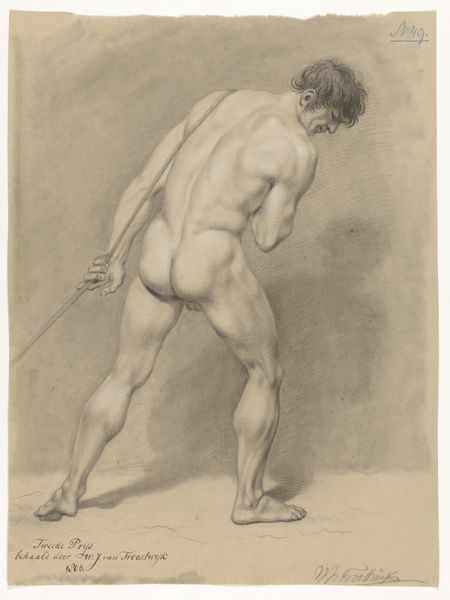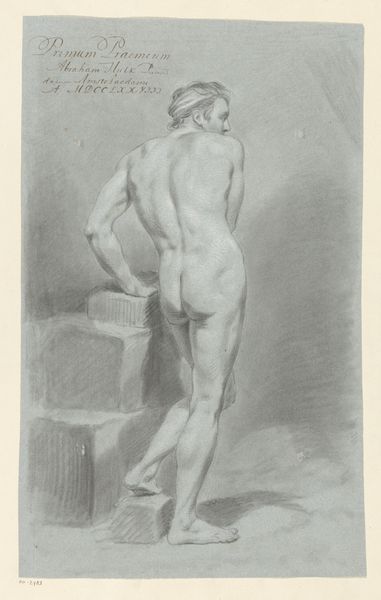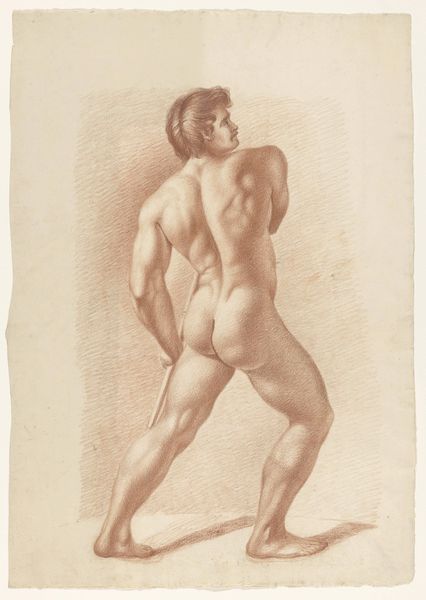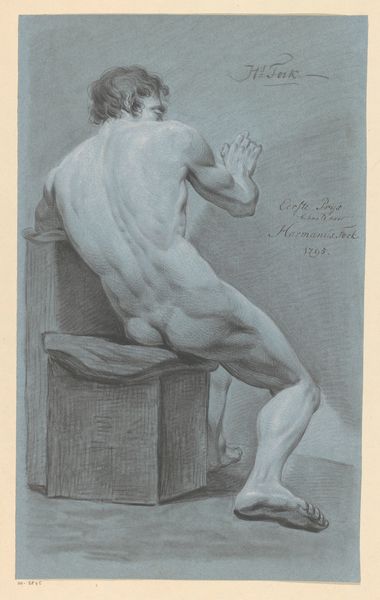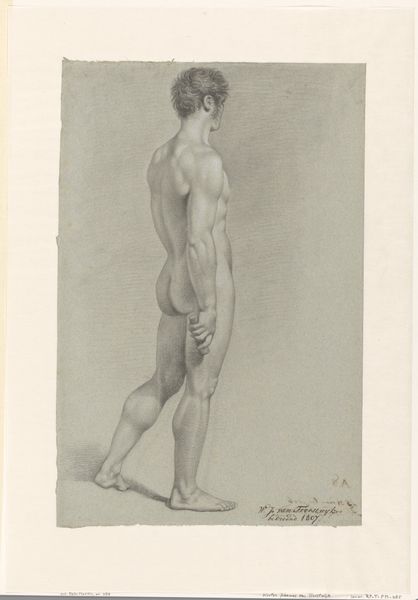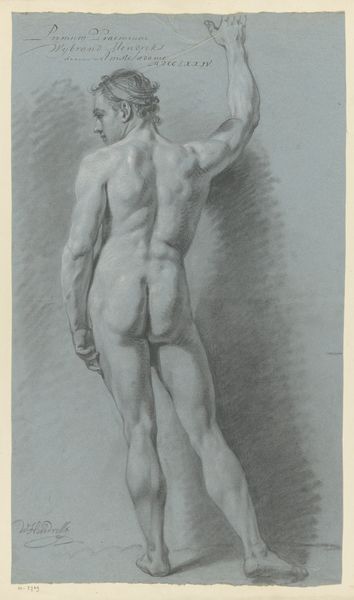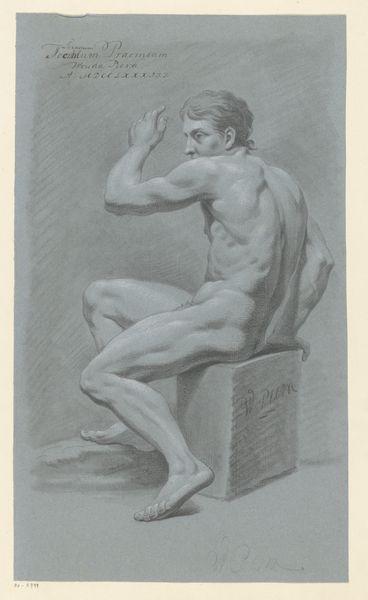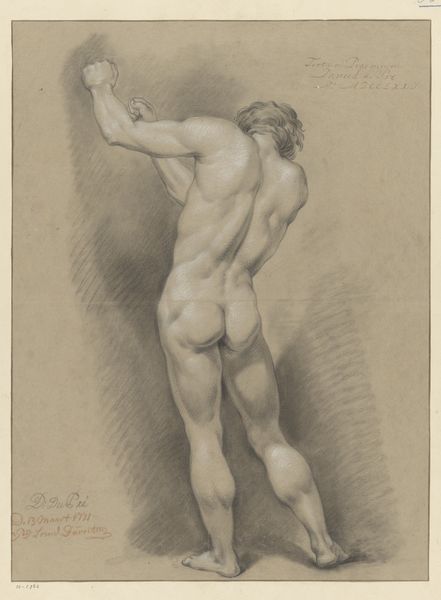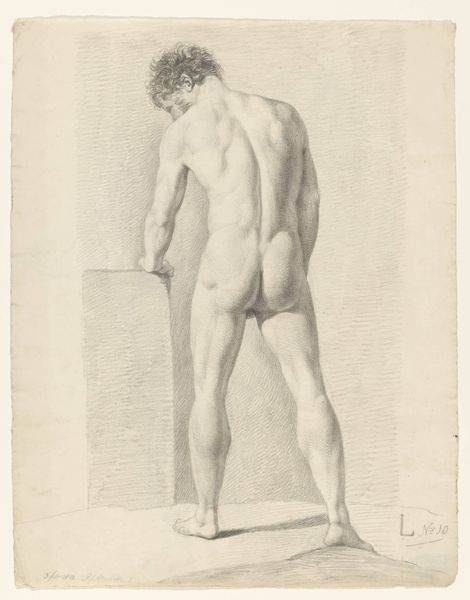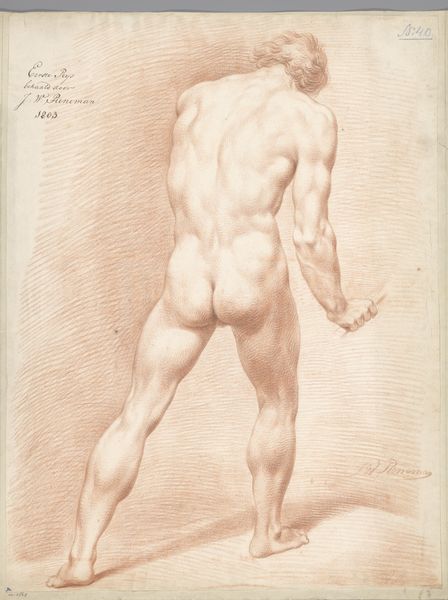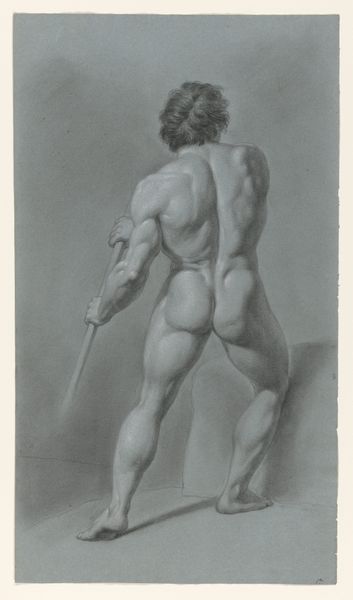
drawing, charcoal
#
drawing
#
charcoal drawing
#
figuration
#
charcoal
#
academic-art
#
nude
Dimensions: height 650 mm, width 500 mm
Copyright: Rijks Museum: Open Domain
Editor: This is "Standing Male Nude, Seen from the Back" by Pier Pander, likely created between 1874 and 1919, using charcoal. The academic style is so clear in the rendering, but I am wondering about the public role of male nudes in that era. What can we learn from its presentation and its original audience? Curator: That’s an excellent question. The proliferation of academic nudes like this one coincided with the rise of public art museums and academies. How might access to these types of images have shaped societal views on masculinity and ideal human forms? Editor: So, these drawings weren't necessarily intended for private enjoyment but perhaps served a didactic purpose within the context of art education? Curator: Precisely. Consider the societal and political functions of public art institutions. How do they influence taste and even shape national identity? What does selecting and displaying images of the nude male body say about a nation’s values, ideas about physical prowess and aesthetics, or perhaps even political power? Editor: It's interesting to think about this drawing as not just a study of form, but also as a potential vehicle for communicating cultural values about beauty and the ideal human form to a wide audience. And maybe normalizing the male nude figure within that context. Curator: Exactly! The public display of such works reinforces—or challenges—prevailing norms. Are there similar, perhaps contemporary, examples where we see the human form used to subtly carry broader political messages through public art? Editor: This makes me reconsider the drawing entirely. I came to it from an art historical perspective focused on skill, and did not initially focus on how the nude form gains additional layers of interpretation depending on the time, context, and how it becomes part of larger institutions like academies. Curator: That’s often the case! And hopefully, this exercise proves how powerful those contextual layers are when looking at art.
Comments
No comments
Be the first to comment and join the conversation on the ultimate creative platform.
